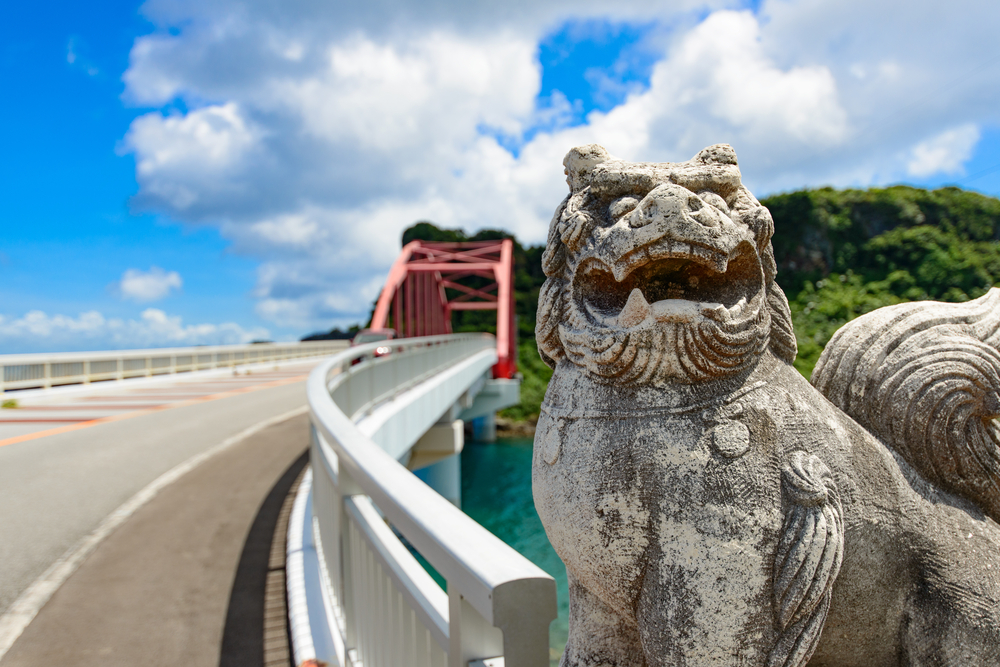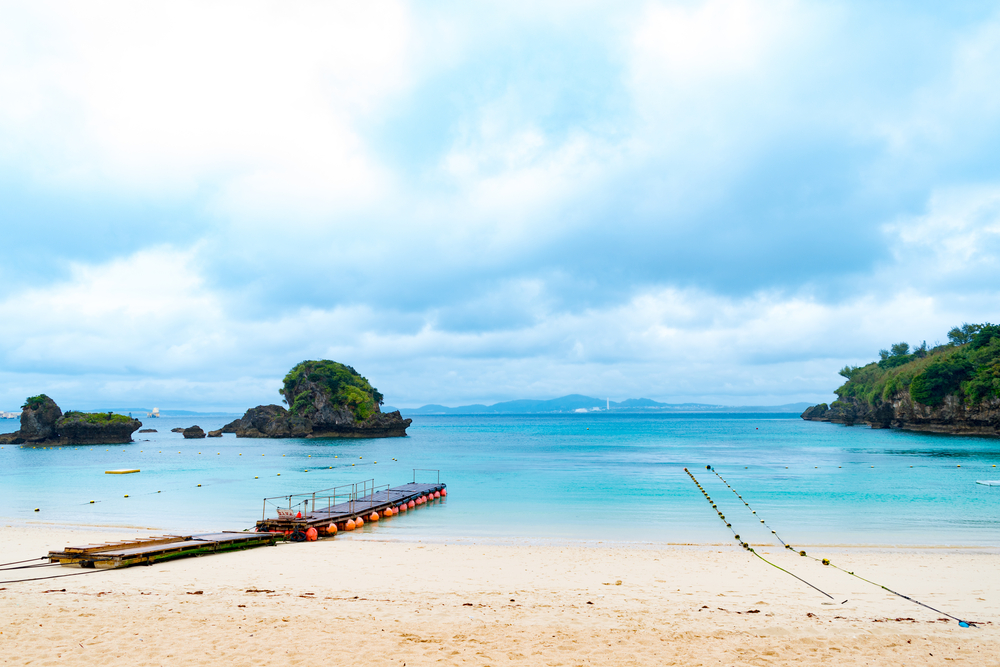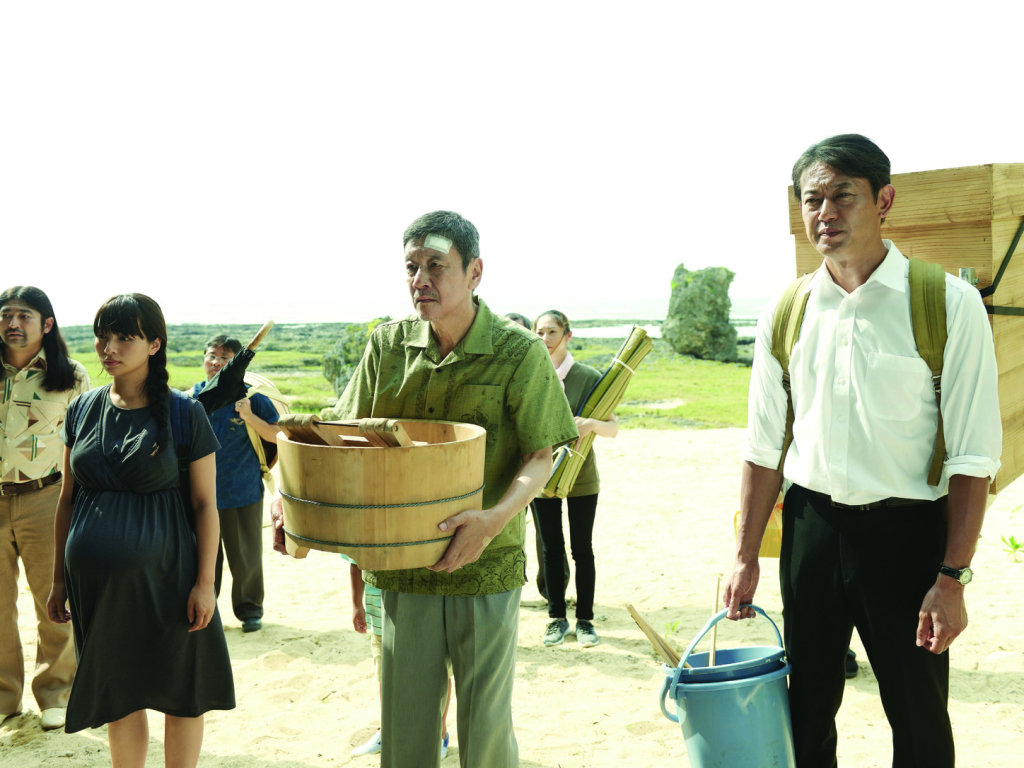Asked to make a movie on the sparse island of Aguni in Okinawa, Toshiyuki Teruya thought he had decided on the base of his story. The popular entertainer, who is most commonly known as Gori from the comedy group Garage Sale, had started writing a script about a deceitful husband trying to hide an affair from his wife in a community with a population of less than 800.
While researching the area, Teruya then found out about an ancient ritual known as senkotsu in which family members wash the bones of their deceased ancestors when the flesh has disappeared as a mark of respect and as a way of saying farewell. Fascinated by the custom, the comedian tore up the original script and began working on a new one that he called Senkotsu (Born Bone Born in English).
“The idea of washing a mummified body is a scary one and some will be disgusted by it”
“I’m from Okinawa yet had no idea this kind of ritual still took place, and I’m pretty sure the vast majority of Japanese people are also ignorant of the fact,” Teruya tells TW. “The idea of washing a mummified body is a scary one and some will be disgusted by it.
“At first it seemed strange to me, however, I came to realize that this cleansing is a way of showing appreciation for ancestors, particularly parents who bring you into this world. It’s a beautiful thing. My father was also moved when he saw the film and asked if I would do something similar for him. I said no. He’s getting cremated.” [Laughs]
According to international cremation statistics taken in 2014, 99.97 percent of the deceased bodies in Japan are cremated, by far the highest rate in the world. Once considered a barbaric Buddhist practice, it was prohibited here in the summer of 1873. However, sanitary issues and a lack of land space convinced the government to overturn the ban two years later. Across the country, the demand for cremations soon outstripped burials, though not all areas were so keen to ditch traditional practices.
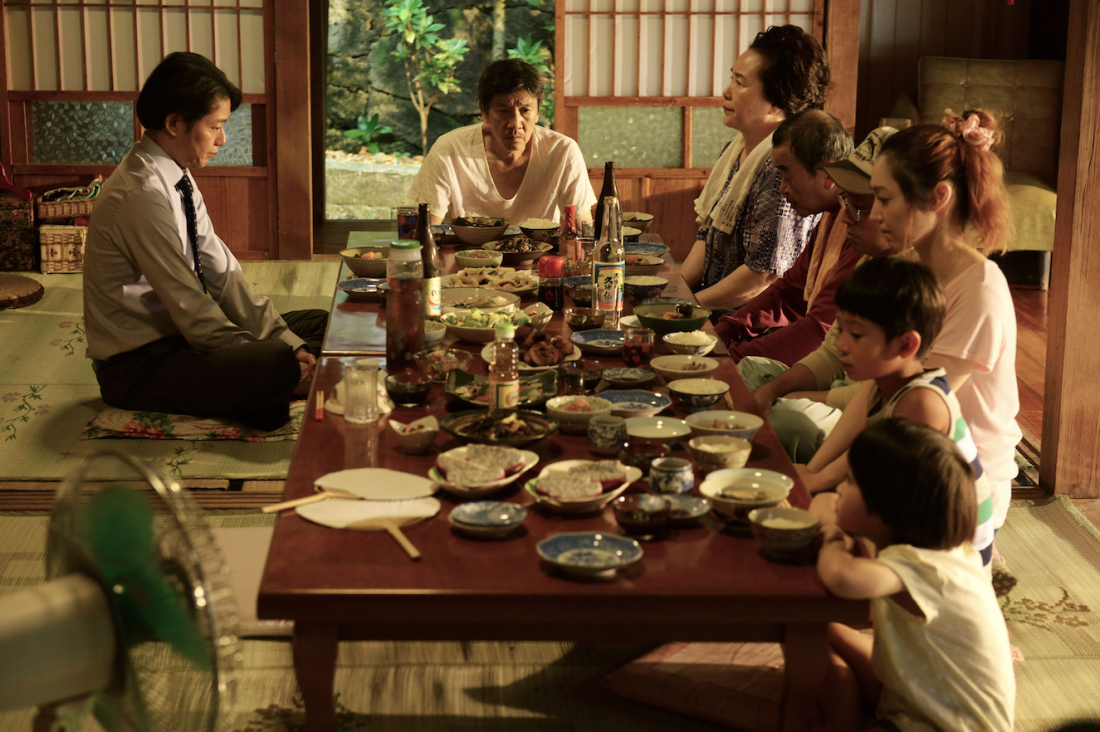
A scene from the movie Born Bone Born
One such place was Okinawa, formerly known as the Ryukyu Kingdom. Influenced culturally by the coastal province of Fujian in Southeast China, it has long been viewed as one of the more spiritual regions of Japan, where deceased ancestors are venerated.
Historically, the dead were placed in the center of a large concrete tomb during the first period of internment. Between three and seven years later the family would gather to clean the bones once the casket had been disinterred. Christopher T. Nelson describes the process in his book Dancing with the Dead: Memory, Performance, and Everyday Life in Postwar Okinawa: “Rotted flesh is stripped away, bones cleansed, and the disorder and collapse of decay rectified. Their useless container discarded, the bones are carefully arranged – reconstructed – in a new vessel, strong and enduring … Senkotsu transforms the decaying body, a thing of horror, to the subject of power encountered by human actors.”
It was a custom that appeared to be entrenched in Okinawan culture, yet according to Nelson, opposition to the practice of senkotsu started to grow in the second half of the 20th century as it was seen by some as archaic and unhygienic. The bone washing ritual was effectively abandoned in the capital city of Naha and many surrounding areas following the prefecture’s reversion from U.S. to Japanese control in 1972. Nevertheless, it is still practiced on some remote villages and islands in the region.
“Upon visiting Aguni-Shima I interviewed many elderly people who had experienced senkotsu ceremonies,” recalls Teruya. “While cremation has become the norm there, I heard that some parents still want their bones washed when they die and begged not to be burned. It’s not an easy choice for relatives of the deceased, however, because it can be extremely harrowing to see a loved one in that condition. Some choose to escape from the situation entirely, others get as drunk as possible, so the reality becomes blurred.”
Okinawa isn’t the only region in Asia where the cleansing of the deceased’s bones still takes place. One of the most famous examples is the indigenous tribe of Toraja, located in the highlands of South Sulawesi, Indonesia. Every three years they dig up their dead relatives and friends to spend time with them in a festival called Ma’nene. After being left to dry, the bodies are washed and dressed in fancy clothes before being paraded through the village. As it is seen as a joyous celebration, crying is prohibited.
The practice of senkotsu in Okinawa tends to be a much more solemn and intimate affair. While Teruya hasn’t been present at a ceremony himself, he did observe a rare video of the ritual. “It looked very sad yet at the same time there was something enchanting about the way they delicately washed the mummified body,” he says. “It felt like they were communicating to their ancestor through the bones. Watching the video strengthened my desire to use senkotsu as the main theme for the movie.”
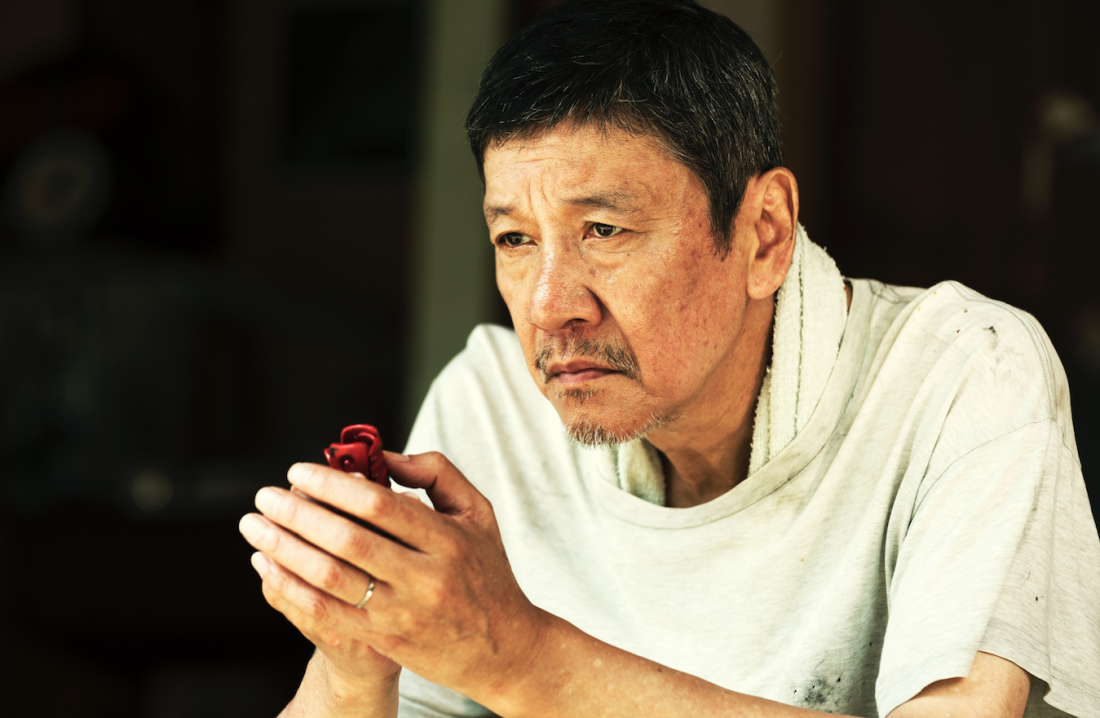
A scene from the movie Born Bone Born
Born Bone Born, a feature-length adaptation of Teruya’s original short film, begins with the funeral of Emiko, a character based on Teruya’s late mother. Four years after the burial, her family and relatives gather for the senkotsu ceremony. Alcoholic husband Nobutsuna (Eiji Okuda) is a complete mess, son Tsuyoshi (Michitaka Tsutsui) is going through marriage troubles, and heavily pregnant daughter Yuko (Ayame Misaki) is facing up to life as a single mother. While it all sounds fairly dark and depressing, Born Bone Born is actually a light-hearted comedy
“Going in too deeply with the topic of senkotsu would have probably been too scary,” opines Teruya. “This is a comical family drama about the ending of one life and the beginning of another. Some of it comes from my own experiences as I lost my mother and had my first child within the last few years. The scene where Yuko has the baby is quite detailed as it’s based on memories of my wife giving birth. She told me to capture the moment on film, but I took her a bit too literally on that and shot her private area as the baby came out. I don’t think we’ll be watching that any time soon.”
“Being a comedian, I’m better at making films that aren’t too serious,” continues Teruya. “I wanted it to be thoughtful and funny, so the audience could laugh and cry at the same time. I was inspired by movies such as Little Miss Sunshine by Jonathan Dayton and Valerie Faris and The Descendants by Alexander Payne. While they are very humorous films, you can still feel the sadness in the background. That’s what I tried to create in Born Bone Born.”
After premiering at the Okinawa International Movie Festival in April, Born Bone Born played as part of the out-of-competition program at the 40th Moscow International Film Festival.
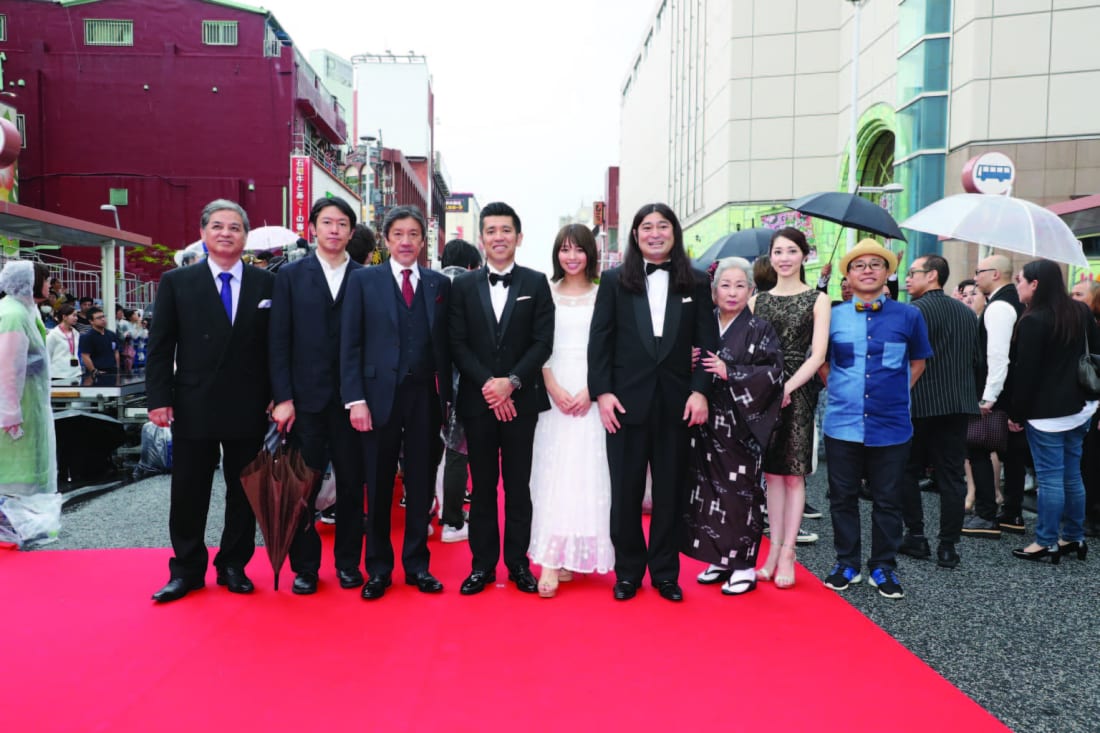
Cast and crew at the Okinawa International Movie Festival 2018
ON LOCATION: Ikei Island
Born Bone Born‘s most picturesque scenes were shot on Ikei Island, a tiny region in Okinawa’s Uruma City known for its clear, turquoise-colored tropical water and intriguing looking cliffs on the coastline. The furthest point along the Inter-Island Causeway, it is connected to Miyagi Island by the gorgeous Ikei Ohashi Bridge and takes a little over an hour by car from Naha. It is a great destination for those who desire a complete escape from city life. You can take a dip in the ocean, enjoy the tropical fish from a glass bottom boat or experience some of the marine sports on offer. Aside from the traditional villages and large sugar cane fields, there is little else on the island, just peace and tranquility.
